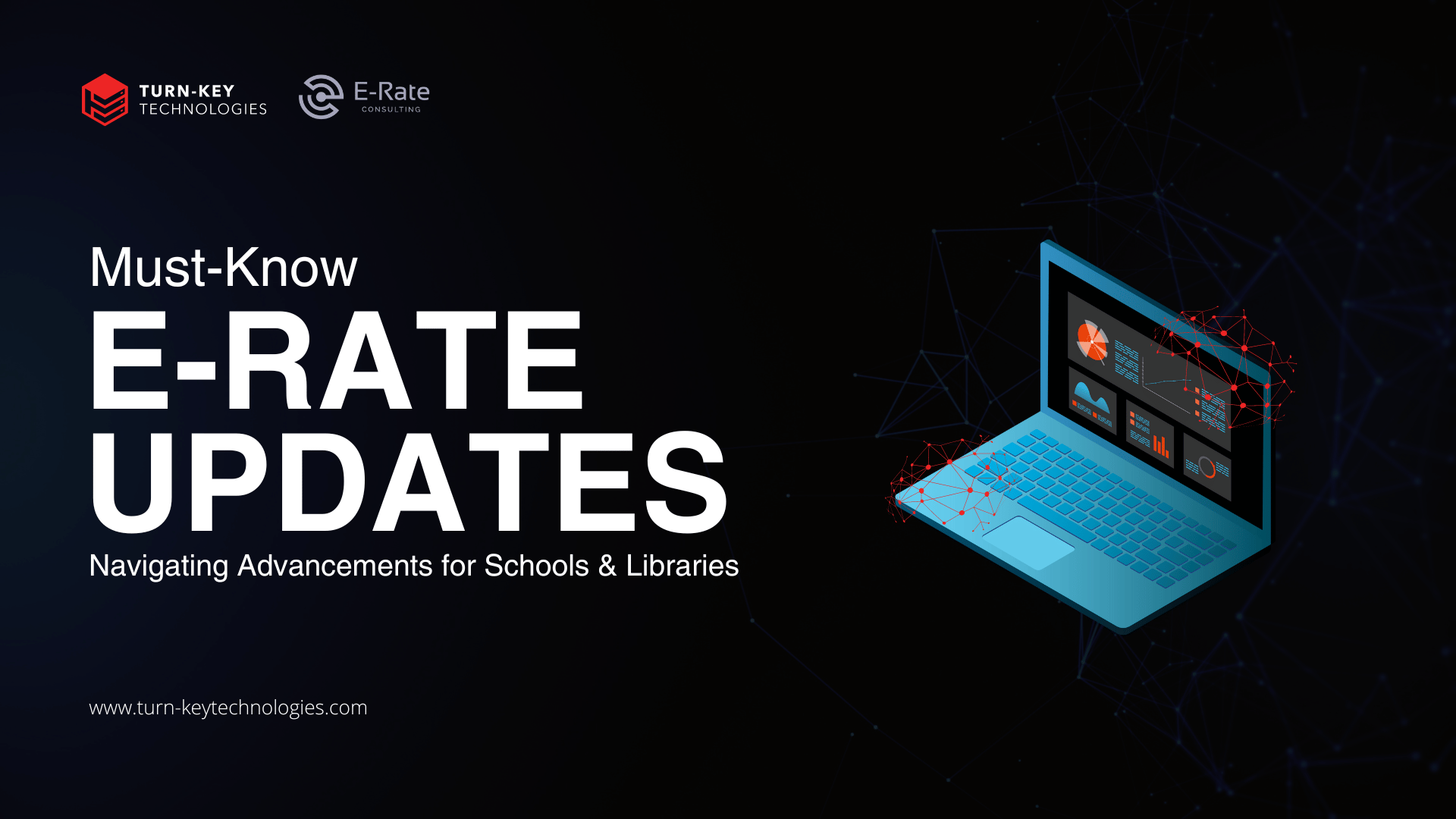Hey K-12s, Let’s Talk About Non-E-Rate Purchases
The E-rate program has helped countless K-12 schools afford telecommunications services and Internet access. However, there are still a few necessary...
3 min read
Tony Ridzyowski : Jul 20, 2022 3:23:20 PM

E-rate funding is a great resource that allows all schools — not just public ones — to increase their connectivity! Learn how private schools can effectively leverage E-rate.
E-rate, or the Universal Service Schools and Libraries Program, is a government-funded program designed to help schools and libraries implement digital learning for students without breaking the bank. That includes funding access to high-speed internet and telecommunication services and to broader digital devices. It comes in two categories, each of which targets specific digital and connectivity needs.
While the program has been around for over 20 years, it continues to confuse many who would like to take advantage of it. It’s often unclear who exactly qualifies for the program, what they can use it for, and how to make the most of the program. One of the biggest misconceptions about E-rate is that it’s only available to public schools. In fact, any non-profit private school or charter school can also access E-rate funding to keep their students prepared and up to date with the latest technology. But the E-rate application process can be fairly tricky if you’re trying to navigate it alone. Read on for tips on getting started with E-rate.
Yes! E-rate funding is available to any non-profit private or charter school and the process of accessing that funding is identical whether you’re applying on behalf of a private school, public school, or library. The E-rate program identifies which network assets at a school are eligible for special funding and then calculates the school’s discount levels for those network assets based on the percentage of its students who qualify for reduced-price school lunches.
If you’re confused about whether you qualify and how you can make the most of your potential E-rate funding, an experienced partner can be a great resource in navigating the complex E-rate application process.
As mentioned earlier, E-rate funding falls into two categories. Although private schools are generally eligible for E-rate, the division of the categories means some schools may be unable to use all of their potential E-rate funding. The categories are:
The good news for private schools is that there are very few exemptions or limitations to E-rate funding access — any K-12 private school is eligible. The exceptions are for-profit private schools and schools with an endowment exceeding $50 million, making these schools ineligible for E-rate.
As long as your private school is non-profit with an endowment under $50 million, you should be eligible for E-rate!
One of the biggest problems with E-rate is the complexity of the application process. The best way to get through that process is by turning to an experienced partner, but for those looking to complete the application on their own, here are a few tips to follow:
E-rate is a great resource for schools — whether public or private — looking to increase their connectivity and empower their students to succeed. Unfortunately, accessing those funds can be challenging without the help of an expert that has gone through the process before.
At Turn-key Technologies, Inc. (TTI), we have the experience and the resources to help administrators navigate the complexities of E-rate funding, simultaneously removing the burden from a school’s internal resources and increasing the chances of a successful application.
Contact us today to find out how TTI can help you secure and leverage E-rate funds to support cutting-edge education technology in your private school.

The E-rate program has helped countless K-12 schools afford telecommunications services and Internet access. However, there are still a few necessary...

Cybercriminals have learned that schools are prime targets for ransomware attacks — don’t let your school be the next victim. Cyber threats are a...

E-Rate funding presents a tremendous opportunity for schools and libraries to build state-of-the-art technology infrastructure at reduced costs....